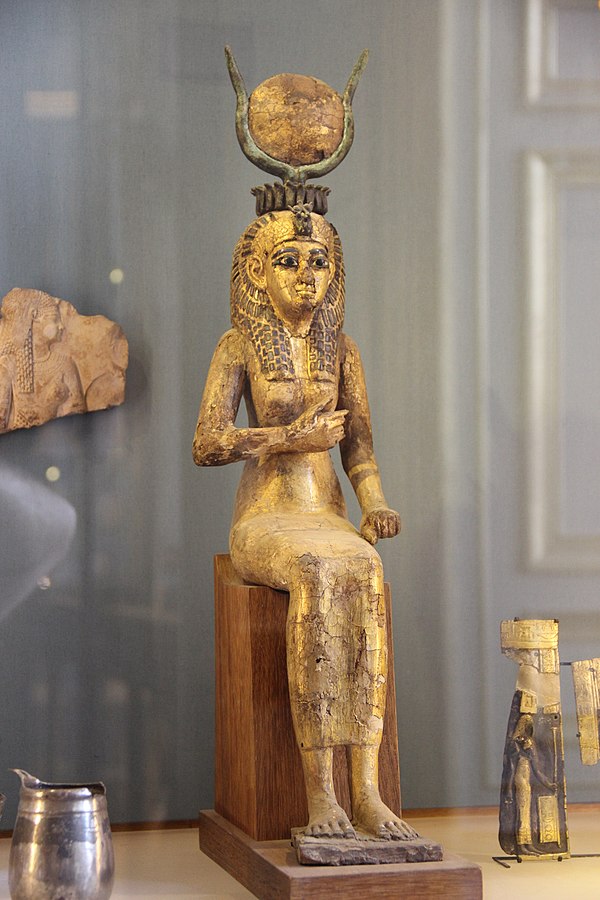Isis: Egyptian Goddess of Magic and Healing

Photograph of goddess Isis statuette by Gary Todd, public domain
Daughter of Nut, Goddess of the Sky, and Geb, God of the Earth, Isis is the clever and powerful Egyptian Goddess of Magic and Healing and is married to her brother Osiris, God of the Underworld.
Isis is generally portrayed as an attractive woman wearing a dress and a cow-horn, sun-disk crown. She's often depicted as a winged goddess too, and she's been known to transform herself into animals on occasion, such as a bird or a scorpion.
As far as symbols go, Isis is associated with the tit symbol (also called the Knot of Isis, Girdle of Isis, Blood of Isis, or Buckle of Isis). The tit is considered by some to be a symbol of protection, and others believe it could also be a symbol of menstruation. More symbols related to Isis consist of sistrums, thrones, cow horns, and sun disks.

Photograph of a tit amulet from the Metropolitan Museum of Art, public domain
Isis is an extremely prominent deity in the Egyptian pantheon, and it's no wonder why. Originally, she and her husband are the rulers of Egypt, before their brother Set murders Osiris, dismembers the god's corpse, scatters the pieces of the body across the land, and takes over as pharaoh.
In this iconic story from Egyptian mythology, Isis's love for Osiris is so great that she refuses to let him go. She searches Egypt for his dismembered body parts, gathers most of them (or, in some versions of the tale, all of them), puts him back together, and resurrects him, making him the first Egyptian mummy. However, after becoming a mummy he can't return to his role as pharaoh of Egypt, so he becomes the God of the Underworld instead.
Isis is also significant in Egyptian mythos because she's the mother of one of the most important gods in the pantheon: Horus, the falcon-headed God of the Sky. Horus avenges Osiris's (his father's) murder by overthrowing Set and becoming the pharaoh of Egypt.
What sticks out most to me regarding Isis, though, is the fact that she's so compassionate. In one story, a mortal woman refuses to give an exhausted Isis (who, at the time, is pregnant with Horus) refuge because the goddess is flanked by scorpions (the scorpions are protecting Isis since she's pregnant with the rightful pharaoh).
Isis moves on, and unbeknownst to her, one of the scorpions protecting her and Horus poisons the mortal woman's young son in punishment for not giving the goddess refuge. The woman knows her son will die, and she carries him out into the streets, screaming and crying. And even though the woman turned Isis away when she shouldn't have, Isis can't bring herself to allow the child to die; she cares too much for the woman and the little boy. She uses her magic to heal the child, saving his life.
I hope you enjoyed September 2021's Myth of the Month!

Receive a free book and never miss an update from A. P. Mobley by signing up for her newsletter, War on the Gods Army!
Thanks for joining War on the Gods Army!
Be sure to check your email inbox for your free book. If you don't see it, check your spam and promo folders for it.